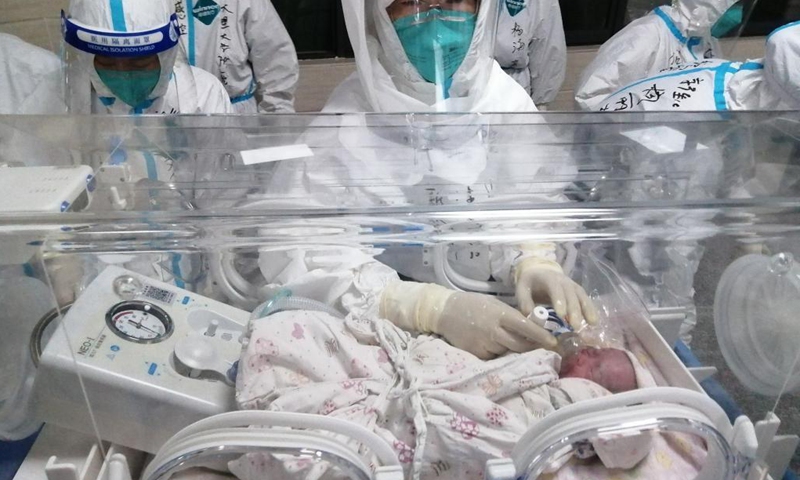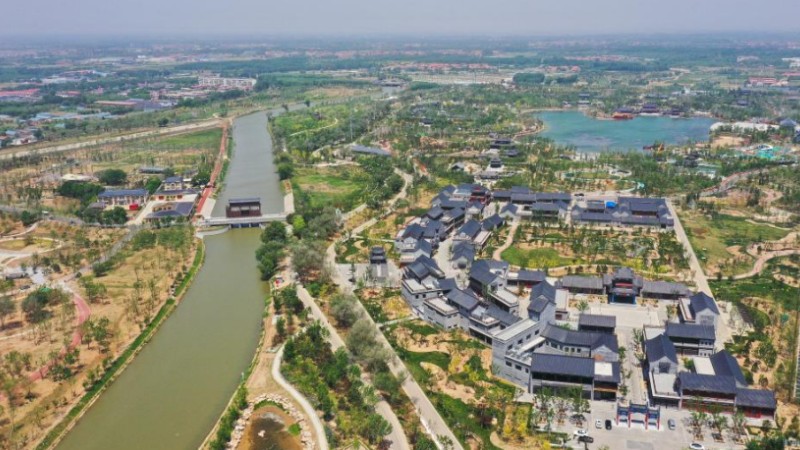Hospitals call for maternity-friendly society

Medical staff take care of a newborn baby in the special care unit in Ruili, southwest China's Yunnan Province, Aug. 11, 2021. A pregnant woman with COVID-19 Wednesday morning gave birth to triplets in the quarantine area of a designated hospital in southwest China's border city of Ruili, the Yunnan provincial health commission said on Thursday. It is the first case of its kind in China.Photo:Xinhua
Some grassroots hospitals in China have reportedly seen declines in the number of registered pregnant women this year, local media reported. Chinese demographers predict the country will record 8.5 to 9 million newborns this year, while calling for efforts to play on new advantages and further improve population quality.
Doctors from the department of Obstetrics and Gynaecology (O&G) in a hospital in Henan Province told the China Philanthropist magazine that they've noticed a precipitous drop of registered pregnant women this year, compared with previous years.
Doctors from Southwest China's Guizhou and Northeast China's Heilongjiang provinces have also reported the declining number of births at their institutes, according to Hongxing News, a news portal based in Chengdu.
China's population fell by 850,000 in 2022 from the previous year, the National Statistics Bureau (NBS) said in February. The number of births was 9.56 million last year, or 6.77 per 1,000 people, data from the bureau showed.
"Although births in 2023 are expected to further decline from 2022, the number will be between 8.5 million and 9 million," according to He Yafu, an independent demographer.
In recent days, the People's Daily and Xinhua News Agency published articles encouraging society to recognize the "new realities" of China's population development.
An article published by Xinhua on Monday called for comprehensive and appropriate views of China's population.
The article asked people to consider both quantity and quality of the population, and not simply regard increases or decreases as advantages or disadvantages.
Cai Fang, former deputy director of the Chinese Academy of Social Sciences, said during a recent seminar that there's no need to be pessimistic about the declining birth rate.
It is time for China to create conditions to further improve the quality of the population to make up for the decrease, and to replace factor inputs with productivity.
He said that the declining population, along with COVID-19, had an impact on consumption. He suggested fair and effective distribution of labor, elevating the income of those with low salaries, and expanding equal access to basic public goods.
Wang Pingping, a senior NBS official, said in January that although population declined in 2022, China's population dividend and vast market advantage still exist.
The country still has huge labor resources, as the working-age population amounts to 900 million.
The official said population dividend has just started to show as education level of Chinese people improves.
In 2022, the average education span for people aged 16-59 reached 10.93 years, showing an increase of 0.11 years from 2021.
Photos
Related Stories
- Hospitals strive to preserve fertility for cancer patients
- With virus threat easing, U.S. hospitals still as full as ever: media
- China improves service capacity of rural, community-level hospitals as Spring Festival draws near
- Hospitals prepared for surge in cases
- Beijing to reduce hospital service interruptions amid COVID-19 control
Copyright © 2023 People's Daily Online. All Rights Reserved.









